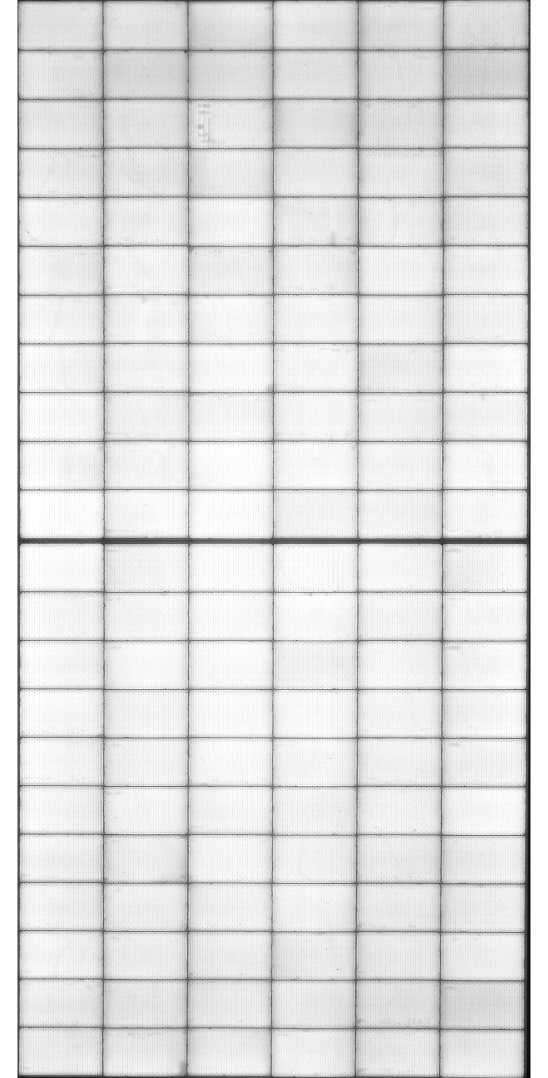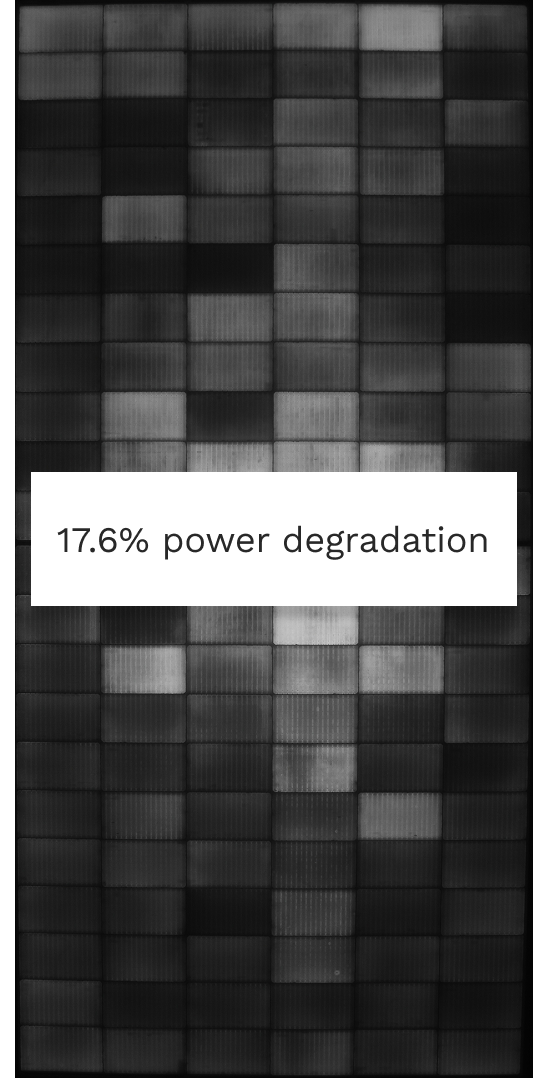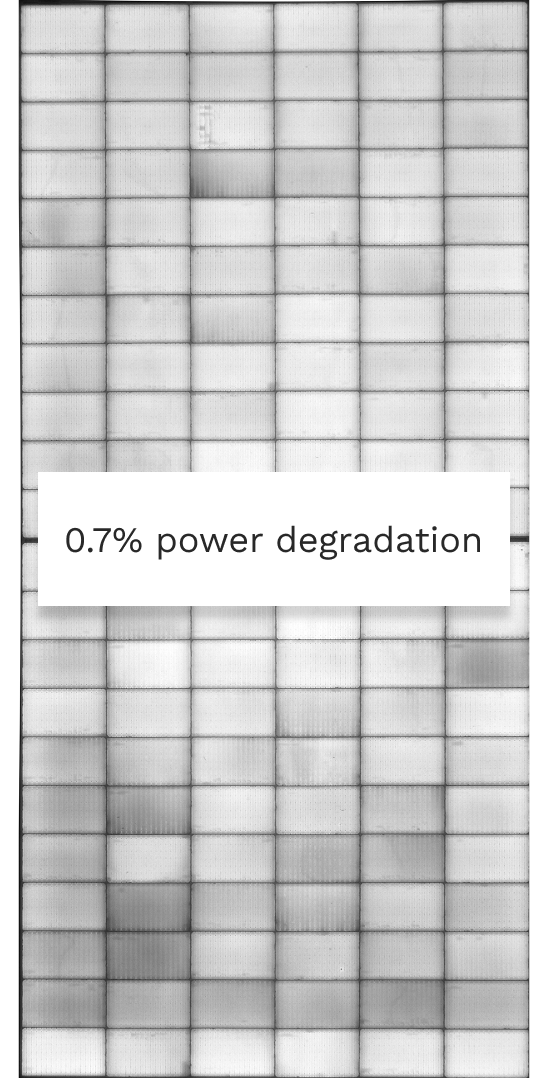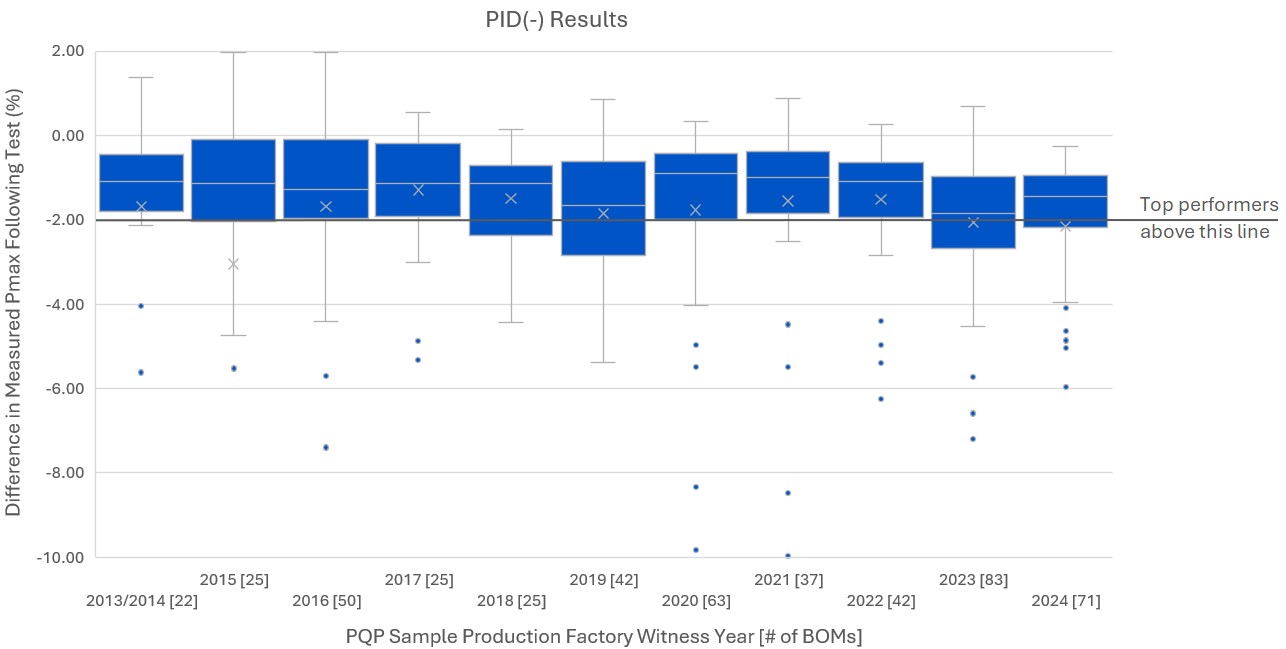The pre-stress image shows no indication of PID susceptibility.
Key Takeaways
More Top Performers
72% of BOMs produced in 2024 degraded by < 2% following PID(-).
This is an increase from the 57% of BOMs produced in 2023 that degraded by < 2%. Although not a statistically significant change, the median degradation following PID(-) decreased from 1.9% for BOMs produced in 2023 to 1.5% for BOMs produced in 2024. Two PID(-) outliers with 11.9% and 17.6% power loss drove down the average for 2024 BOMs. See the Power Degradation graph below for more.
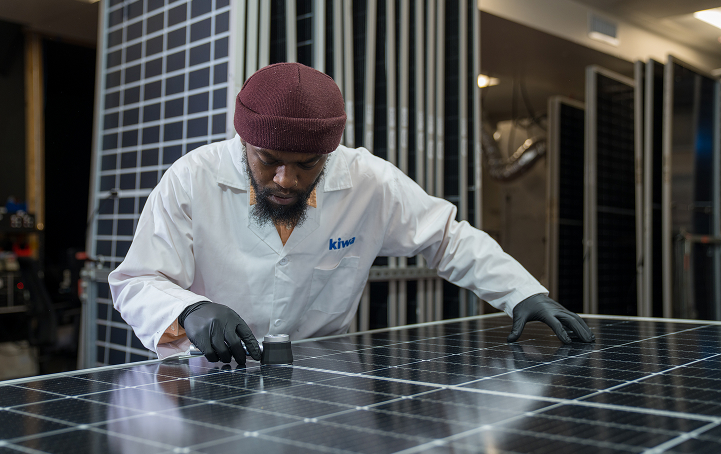
Minimal Module Type Influence
Results remained aligned across cell technologies and laminate types.
While there was a wider range in TOPCon results compared to PERC and HJT, there were no statistically significant differences in the PID(-) susceptibility for TOPCon, PERC and HJT cell technologies, nor for glass//glass versus glass//backsheet. The cell technology and module type are not reliable indicators of PID performance.
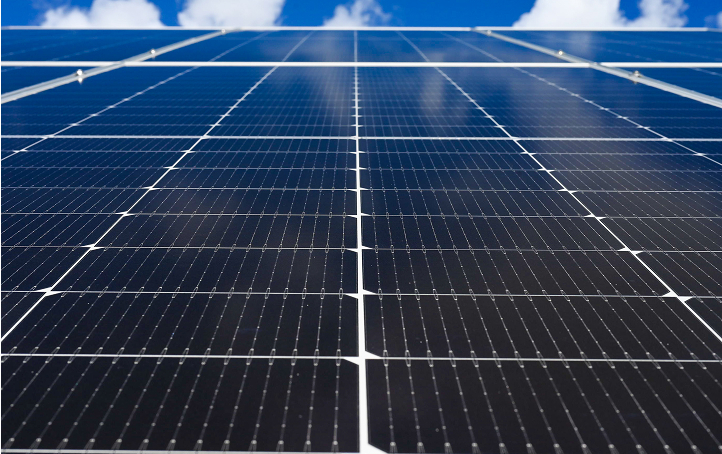
PID(+) versus PID(-)
PID is typically lower for positive-polarity than for negative-polarity.
New for the 2025 Scorecard, PID Top Performers must have < 2% degradation in PID(-) and PID(+). PID is typically lower for PID+, but 9% of BOMs with < 2% degradation for PID(-) had ≥ 2% degradation for PID(+), removing them from the Top Performer list. Conversely, 32% of BOMs with < 2% degradation for PID(+) had ≥ 2% degradation following PID(-).
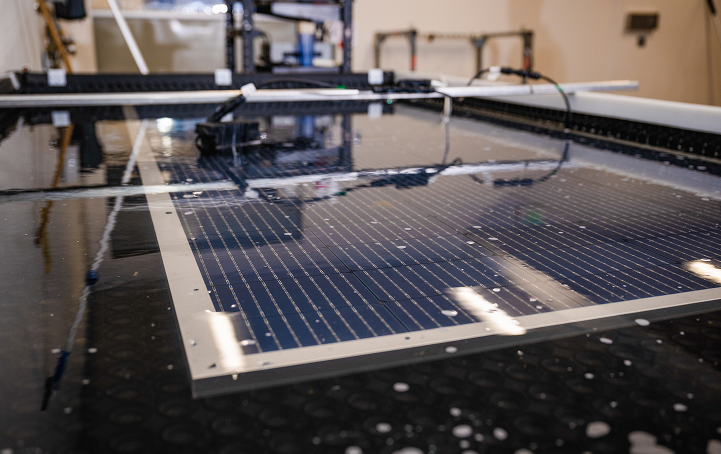
Failures Remain
Similar to the 2024 Scorecard, 9% of BOMs experienced a failure during PID testing.
Most of these failures were due to power degradation caused by PID-polarization, which is often reversable with a UV exposure (see the Test Result Spotlight below). There have been reports of PID-polarization occurring in the field and therefore this is considered a test failure. Other failures following PID included delamination and wet leakage failures. See the Failures page for more.
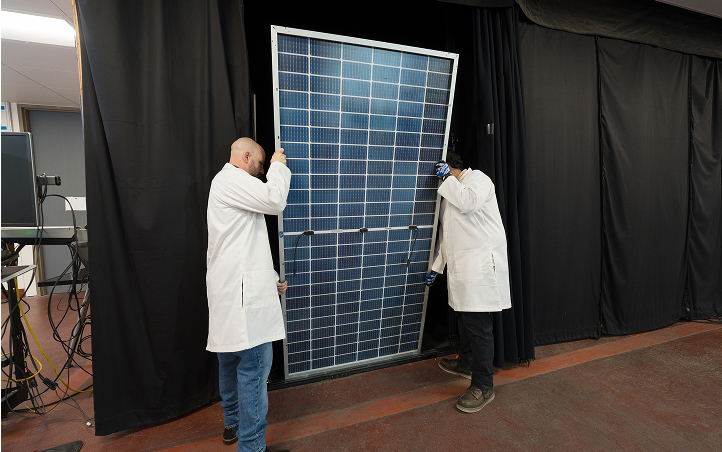
PID Test Result Spotlight
PQP testing continues to reveal BOMs that are susceptible to PID-polarization (PID-p), including the TOPCon module below. Kiwa PVEL’s testing has confirmed that many BOMs do not exhibit PID-p, but others can suffer a significant amount of power loss. While a subsequent 2 kWh/m2 exposure to UV light (equivalent to weeks outdoors) can often reverse this effect, recent works by NREL and FSEC1 have shown examples of PID-p occurring in the field. Given the possibility of PID-p occurring at solar sites, the PID Top Performer criteria is < 2% power loss before any UV recovery for both PID192(-) and PID192(+).
Power Degradation of PID BOMs
All 2013/2014 and 2015 results are from 600 hours of PID testing. This was decreased to 192 hours for 2016 results and beyond. Only PID-negative results are shown.
Outliers with >10% degradation are not shown. In some cases, these cause a significant reduction in the mean.
1 Peter Hacke, Cecile Molto, Dylan Colvin, Ryan Smith, Farrukh Ibne Mahmood, Fang Li, Jaewon Oh, Govindasamy Tamizhmani and Hubert Seigneur. EPJ Photovolt., 16 (2025) 16. Polarization-type potential-induced degradation in bifacial PERC modules in the field. https://doi.org/10.1051/epjpv/2025004

